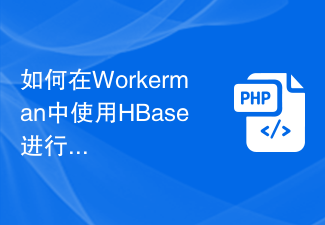By Lars Hofhansl Modern CPU cores can execute hundreds of instructions in the time it takes to reload the L1 cache. "RAM is the new disk" as a coworker at Salesforce likes to say. The L1-cache is the new RAM I might add. As we add more and
By Lars HofhanslModern CPU cores can execute hundreds of instructions in the time it takes to reload the L1 cache. "RAM is the new disk" as a coworker at Salesforce likes to say. The L1-cache is the new RAM I might add.
As we add more and more CPU cores, we can easily be memory IO bound unless we are a careful.
Many common problems I have seen over the years were related to:
-
concurrency problems
Aside from safety and liveliness considerations, a typical problem is too much synchronization limiting potential parallel execution. -
unneeded or unintended memory barriers
Memory barriers are required in Java by the following language constructs:- synchronized - sets read and write barriers as needed (details depend on JVM, version, and settings)
- volatile - sets a read barrier before a read to a volatile, and write barrier after a write
- final - set a write barrier after the assignment
- AtomicInteger, AtomicLong, etc - uses volatiles and hardware CAS instructions
-
unnecessary, unintended, or repeated memory copy or access
Memory copying is often seen in Java for example because of the lack of in-array pointers, or really just general unawareness and the expectation that "garbage collector will clean up the mess." Well, it does, but not without a price.
Like any software project of reasonable size, HBase has problems of all the above categories.
Profiling in Java has become extremely convenient. Just start jVisualVM which ships with the
Over the past few weeks I did some on and off profiling in HBase, which lead to the following issues:
HBASE-6603 - RegionMetricsStorage.incrNumericMetric is called too often
Ironically here it was the collection of a performance metric that caused a measurable slowdown of up 15%(!) for very wide rows (> 10k columns).The metric was maintained as an AtomicLong, which introduced a memory barrier in one of the hottest code paths in HBase.
The good folks at Facebook have found the same issue at roughly the same time. (It turns that they were also... uhm... the folks who introduced the problem.)
HBASE-6621 - Reduce calls to Bytes.toInt
A KeyValue (the data structure that represents "columns" in HBase) is currently backed by a single byte[]. The sizes of the various parts are encoded in this byte[] and have to read and decoded; each time an extra memory access. In many cases that can be avoided, leading to slight performance improvement.HBASE-6711 - Avoid local results copy in StoreScanner
All references pertaining to a single row (i.e. KeyValue with the same row key) were copied at the StoreScanner layer. Removing this lead to another slight performance increase with wide rows.HBASE-7180 - RegionScannerImpl.next() is inefficient
This introduces a mechanism for coprocessors to access RegionScanners at a lower level, thus allowing skipping of a lot of unnecessary setup for each next() call. In tight loops a coprocessor can make use of this new API to save another 10-15%.HBASE-7279 - Avoid copying the rowkey in RegionScanner, StoreScanner, and ScanQueryMatcher
The row key of KeyValue was copied in the various scan related classes. To reduce that effect the row key was previously cached in the KeyValue class - leading to extra memory required for each KeyValue.This change avoids all copying and hence also obviates the need for caching the row key.
A KeyValue now is hardly more than an array pointer (a byte[], an offset, and a length), and no data is copied any longer all the way from the block loaded from disk or cache to the RPC layer (unless the KeyValues are optionally encoded on disk, in which case they still need to be decoded in memory - we're working on improving that too).
Previously the size of a KeyValue on the scan path was at least 116 bytes + the length of the rowkey (which can be arbitrarily long). Now it is ~60 bytes, flat and including its own reference.
(remember during a course of a large scan we might be creating millions or even billions of KeyValue objects)
This is nice improvement both in term of scan performance (15-20% for small row keys of few bytes, much more for large ones) and in terms of produced garbage.
Since all copying is avoided, scanning now scales almost linearly with the number of cores.
HBASE-6852 - SchemaMetrics.updateOnCacheHit costs too much while full scanning a table with all of its fields
Other folks have been busy too. Here Cheng Hao found another problem with a scan related metric that caused a noticeable slowdown (even though I did not believe him first).This removed another set of unnecessary memory barriers.
HBASE-7336 - HFileBlock.readAtOffset does not work well with multiple threads
This is slightly different issue caused by bad synchronization of the FSReader associated with a Storefile. There is only a single reader per storefile. So if the file's blocks are not cached - possibly because the scan indicated that it wants no caching, because it expects to touch too many blocks - the scanner threads are now competing for read access to the store file. That lead to outright terrible performance, such a scanners timing out even with just two scanners accessing the same file in tight loop.This patch is a stop gap measure: Attempt to acquire the lock on the reader, if that failed switch to HDFS positional reads, which can read at an offset without affecting the state of the stream, and hence requires no locking.
Summary
Together these various changes can lead to ~40-50% scan performance improvement when using a single core. Even more when using multiple cores on the same machines (as is the case with HBase)An entirely unscientific benchmark
20m rows, with two column families just a few dozen bytes each.I performed two tests:
1. A scan that returns rows to the client
2. A scan that touches all rows via a filter but does not return anything to the client.
(This is useful to gauge the actual server side performance).
Further I tested with (1) no caching, all reads from disk (2) all data in the OS cache and (3) all data in HBase's block cache.
I compared 0.94.0 against the current 0.94 branch (what I will soon release as 0.94.4).
Results:
-
Scanning with scanner caching set to 10000:
-
0.94.0
no data in cache: 54s
data in OS cache: 51s
data in block cache: 35s
-
0.94.0
-
0.94.4-snapshot
no data in cache: 50s (IO bound between disk and network)
data in OS cache: 43s
data in block cache: 32s
(limiting factor was shipping the results to the client)
-
all data filtered at the server (with a SingleValueColumnFilter that does not match anything, so each rows is still scanned)
-
0.94.0
no data in cache: 31s
data in OS cache: 25s
data in block cache: 11s
-
0.94.0
-
0.94.4-snapshot
no data in cache: 22s
data in OS cache: 17s
cache in block cache: 6.3s
So as you can see scan performance has significantly improved since 0.94.0.
Salesforce just hired some performance engineers from a well known chip manufacturer, and I plan to get some of their time to analyze HBase in even more details, to track down memory stalls, etc.
原文地址:HBase Profiling, 感谢原作者分享。
 在Beego中使用Hadoop和HBase进行大数据存储和查询Jun 22, 2023 am 10:21 AM
在Beego中使用Hadoop和HBase进行大数据存储和查询Jun 22, 2023 am 10:21 AM随着大数据时代的到来,数据处理和存储变得越来越重要,如何高效地管理和分析大量的数据也成为企业面临的挑战。Hadoop和HBase作为Apache基金会的两个项目,为大数据存储和分析提供了一种解决方案。本文将介绍如何在Beego中使用Hadoop和HBase进行大数据存储和查询。一、Hadoop和HBase简介Hadoop是一个开源的分布式存储和计算系统,它可
 怎么在springboot中集成hbaseMay 30, 2023 pm 04:31 PM
怎么在springboot中集成hbaseMay 30, 2023 pm 04:31 PM依赖:org.springframework.dataspring-data-hadoop-hbase2.5.0.RELEASEorg.apache.hbasehbase-client1.1.2org.springframework.dataspring-data-hadoop2.5.0.RELEASE增加配置官方提供的方式是通过xml方式,简单改写后如下:@ConfigurationpublicclassHBaseConfiguration{@Value("${hbase.zooke
 在Go语言中使用HBase实现高效的NoSQL数据库应用Jun 15, 2023 pm 08:56 PM
在Go语言中使用HBase实现高效的NoSQL数据库应用Jun 15, 2023 pm 08:56 PM随着大数据时代的到来,海量数据的存储和处理显得尤为重要。在NoSQL数据库方面,HBase是目前广泛应用的一种解决方案。Go语言作为一种静态强类型编程语言,由于其语法简单、性能优秀,被越来越多地应用于云计算、网站开发和数据科学等领域。本文将介绍如何在Go语言中使用HBase来实现高效的NoSQL数据库应用。HBase介绍HBase是一个高可扩展、高可靠性、基
 在Beego中使用HBase进行数据存储和查询Jun 22, 2023 am 11:58 AM
在Beego中使用HBase进行数据存储和查询Jun 22, 2023 am 11:58 AM在Beego框架中使用HBase进行数据存储和查询随着互联网时代的不断发展,数据储存和查询变得越来越关键。大数据时代来临,各种数据源都在各自不同的领域占据着重要地位,其中非关系型数据库是一种在数据存储和查询方面优势明显的数据库,而HBase是一种基于Hadoop的分布式非关系型数据库。本文将介绍如何在Beego框架中使用HBase进行数据存储和查询。一、H
 如何使用Java开发一个基于HBase的NoSQL数据库应用Sep 20, 2023 am 08:39 AM
如何使用Java开发一个基于HBase的NoSQL数据库应用Sep 20, 2023 am 08:39 AM如何使用Java开发一个基于HBase的NoSQL数据库应用引言:随着大数据时代的到来,NoSQL数据库成为处理海量数据的重要工具之一。HBase作为一种开源的分布式NoSQL数据库系统,在大数据领域具有广泛的应用。本文将介绍如何使用Java来开发基于HBase的NoSQL数据库应用,并提供具体的代码示例。一、HBase介绍:HBase是基于Hadoop的分
 如何在Workerman中使用HBase进行数据存储与查询Nov 07, 2023 am 08:30 AM
如何在Workerman中使用HBase进行数据存储与查询Nov 07, 2023 am 08:30 AMWorkerman是一款高性能的PHPsocket框架,它的特点是可以承载大量的并发连接。与传统的PHP框架不同的是,Workerman不依赖于Apache或Nginx等Web服务器,而是通过开启一个PHP进程,独自运行整个应用程序。Workerman具有极高的运行效率和更好的负载能力。与此同时,HBase是一个分布式的NoSQL数据库系统,广泛应用于大数
 PHP和Apache HBase集成实现NoSQL数据库和分布式存储Jun 25, 2023 pm 06:01 PM
PHP和Apache HBase集成实现NoSQL数据库和分布式存储Jun 25, 2023 pm 06:01 PM随着互联网应用和数据量的不断增长,传统的关系型数据库已经不能满足存储和处理海量数据的需求。而NoSQL(NotOnlySQL)作为一种新型的数据库管理系统,其能够在海量数据存储和处理方面具有显著的优势,得到越来越多的关注和应用。在NoSQL数据库中,ApacheHBase是一个非常流行的开源分布式数据库,它基于Google的BigTable思想设计,具
 了解 HBase 缓存技术Jun 20, 2023 pm 07:15 PM
了解 HBase 缓存技术Jun 20, 2023 pm 07:15 PMHBase是一个基于Hadoop的分布式存储系统,旨在存储和处理大规模结构化数据。为了优化它的读写性能,HBase提供了多种缓存机制,可以通过合理的配置来提高查询效率,减少读写延迟。本文将介绍HBase缓存技术以及如何进行配置。HBase缓存种类HBase提供了两种基本缓存机制:块缓存(BlockCache)和MemStore缓存(也称为写缓存)。块缓存是在


热AI工具

Undresser.AI Undress
人工智能驱动的应用程序,用于创建逼真的裸体照片

AI Clothes Remover
用于从照片中去除衣服的在线人工智能工具。

Undress AI Tool
免费脱衣服图片

Clothoff.io
AI脱衣机

AI Hentai Generator
免费生成ai无尽的。

热门文章

热工具

螳螂BT
Mantis是一个易于部署的基于Web的缺陷跟踪工具,用于帮助产品缺陷跟踪。它需要PHP、MySQL和一个Web服务器。请查看我们的演示和托管服务。

DVWA
Damn Vulnerable Web App (DVWA) 是一个PHP/MySQL的Web应用程序,非常容易受到攻击。它的主要目标是成为安全专业人员在合法环境中测试自己的技能和工具的辅助工具,帮助Web开发人员更好地理解保护Web应用程序的过程,并帮助教师/学生在课堂环境中教授/学习Web应用程序安全。DVWA的目标是通过简单直接的界面练习一些最常见的Web漏洞,难度各不相同。请注意,该软件中

SublimeText3 英文版
推荐:为Win版本,支持代码提示!

适用于 Eclipse 的 SAP NetWeaver 服务器适配器
将Eclipse与SAP NetWeaver应用服务器集成。

Dreamweaver Mac版
视觉化网页开发工具






